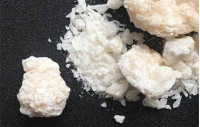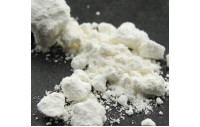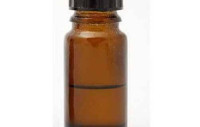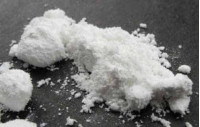
Buy 1P-ETH-LAD for sale online from USA vendor
Table of Contents
Overview
- 1.1 Chemistry
- 1.2 Dosage
- 1.3 Pharmacology
Subjective Effects
- 2.1 Physical Effects
- 2.2 Cognitive Effects
- 2.3 Auditory Effects
- 2.4 Visual Effects
- 2.5 Hallucinatory States
Geometry
- 3.1 Visual Geometry
- 3.2 Hallucinatory States
Toxicity and Harm Potential
- 4.1 General Information
- 4.2 Tolerance and Addiction Potential
- 4.3 Dangerous Interactions
Legal Status
- 5.1 Global Overview
- 5.2 Specific Country Regulations
FAQ (Frequently Asked Questions)
- 6.1 What is 1P-ETH-LAD?
- 6.2 How does 1P-ETH-LAD differ from LSD?
- 6.3 What are the recommended dosages for 1P-ETH-LAD?
- 6.4 What are the potential side effects and risks?
- 6.5 Is 1P-ETH-LAD habit-forming?
- 6.6 How long does tolerance to 1P-ETH-LAD last?
- 6.7 Are there legal concerns associated with 1P-ETH-LAD?
- 6.8 Can 1P-ETH-LAD be used with other substances?
6.9 How should one approach harm reduction when using 1P-ETH-LAD?
Introduction
1-Propionyl-6-ethyl-6-nor-lysergic acid diethyamide, commonly known as 1P-ETH-LAD, belongs to the lysergamide chemical class and is a semisynthetic psychedelic substance. It is recognized as a designer drug analog and a suspected prodrug to ETH-LAD, sharing structural similarities with LSD and 1P-LSD. Anecdotal reports suggest that its psychedelic effects are comparable to ETH-LAD or AL-LAD.
Potency and Effects
Reports indicate that 1P-ETH-LAD is moderately to significantly more potent than LSD, similar to its parent compound ETH-LAD. Users describe it as having subtly different effects, being more visual and synaesthetic, with a less emotionally-charged headspace. However, it has been noted for a higher likelihood of inducing undesirable effects such as anxiety, thought loops, nausea, and other discomforting physical effects compared to other lysergamides.
Limited Data and History
Despite its increasing popularity, there is limited data on the pharmacological properties, metabolism, and toxicity of 1P-ETH-LAD. It emerged in human usage only after January 2016, making it a relatively recent addition to the psychedelic landscape. The compound is often marketed alongside other designer psychedelics, serving as a legal alternative to LSD, and is commercially distributed through online research chemical vendors.
Dosage Guidelines
Understanding the dosage is crucial for the safe use of 1P-ETH-LAD. Threshold effects are observed at 25 µg, with a light dose ranging from 30 to 60 µg. Common doses fall between 60 and 100 µg, while strong effects are experienced at doses of 100 to 200 µg. Heavy doses, exceeding 200 µg, should be approached with caution.
Pharmacology
The compound likely acts as a 5-HT2A partial agonist, with its psychedelic effects attributed to efficacy at the 5-HT2A receptors. 1P-ETH-LAD shares similarities with LSD, acting as a prodrug that transforms into ETH-LAD when incubated in human serum. The exact mechanisms underlying its psychedelic experience remain elusive, emphasizing the need for further research in understanding its pharmacology.
Chemistry
1-Propionyl-6-ethyl-6-nor-lysergic acid diethyamide, commonly known as 1P-ETH-LAD, belongs to the lysergamide chemical class. As a semisynthetic psychedelic substance, it is recognized as a designer drug analog and a suspected prodrug to ETH-LAD. Structurally related to LSD and 1P-LSD, anecdotal reports suggest that 1P-ETH-LAD produces psychedelic effects similar to ETH-LAD or AL-LAD.
Similar to its parent compound ETH-LAD, 1P-ETH-LAD is reported to be moderately to significantly more potent than LSD. Users describe it as having distinctive visual and synaesthetic effects, with a less emotionally-charged headspace compared to LSD. Reports also mention an increased likelihood of undesirable effects like anxiety, thought loops, nausea, and other physical discomforts.
Little data exists about the pharmacological properties, metabolism, and toxicity of 1P-ETH-LAD, with limited human usage history before January 2016. It has gained popularity as a legal alternative to LSD and is commercially available through online research chemical vendors.
Dosage
- Threshold: 25 µg
- Light: 30 - 60 µg
- Common: 60 - 100 µg
- Strong: 100 - 200 µg
- Heavy: 200 µg +
Pharmacology
1P-ETH-LAD likely acts as a 5-HT2A partial agonist, with psychedelic effects believed to stem from its efficacy at the 5-HT2A receptors. It shares similarities with LSD in potency and mechanism, but differences in metabolization may affect the progression and duration of effects. Research indicates the formation of ETH-LAD from 1P-ETH-LAD, suggesting prodrug functionality.
Subjective Effects
Physical Effects
- Stimulation: Energetic and stimulating, encouraging physical activities like running and dancing.
- Spontaneous Bodily Sensations: Intense euphoric tingling sensations, less sharp than LSD.
- Bodily Control Enhancement
- Increased Heart Rate
- Nausea: Mild, occasionally reported in moderate to high dosages.
- Pupil Dilation
- Tactile Enhancement: Consistently present at moderate levels.
- Teeth Grinding
- Temperature Regulation Suppression
-
Cognitive Effects
- Analysis Enhancement
- Conceptual Thinking
- Delusion
- Déjà Vu
- Emotion Enhancement
- Immersion Enhancement
- Increased Music Appreciation
- Laughter
- Memory Suppression
- Ego Death
- Motivation Enhancement
- Novelty Enhancement
- Personal Bias Suppression
- Thought Acceleration
- Thought Loops
- Time Distortion
- Wakefulness
Auditory Effects
- Distortions
- Enhancements
- Hallucinations
Visual Effects
- Enhancements
- Colour Enhancement
- Pattern Recognition Enhancement
- Visual Acuity Enhancement
Distortions
- Drifting (Melting, Breathing, Morphing, and Flowing): Highly detailed yet cartoon-like, similar to LSD.
- After Images
- Colour Shifting
- Depth Perception Distortions
- Diffraction
- Scenery Slicing
- Symmetrical Texture Repetition
- Tracers
Geometry and Legal Status
Geometry
1P-ETH-LAD's visual geometry is reminiscent of LSD, 2C-B, or 2C-I rather than psilocin, LSA, or DMT. Described as intricate, algorithmic, unstructured, brightly lit, and colorful, its geometry is organic, multicolored, flat-shaded, with soft edges. It appears large, slow in motion, and either angular or round in corners. The geometry is non-immersive in depth and maintains consistent intensity. At higher doses, it leans towards level 8B visual geometry over level 8A.
Compared to LSD, 1P-ETH-LAD's geometry is slightly softer, more rounded at the corners, and a bit less intricate while maintaining an overall identical appearance.
Hallucinatory States
1P-ETH-LAD can induce a broad range of hallucinatory states, somewhat less consistent than psychedelics like psilocin or DMT but more likely than LSD. Hallucinatory effects include transformations and internal hallucinations, which can be lucid, interactive, and diverse, ranging from personal to transcendental themes.
Toxicity and Harm Potential
The toxicity and long-term health effects of 1P-ETH-LAD remain unstudied in a scientific context due to its limited history of human usage as a research chemical. Anecdotal reports suggest no negative health effects at low to moderate doses, but caution is advised. Independent research is crucial for assessing the safety of substance combinations.
Tolerance and Addiction Potential
1P-ETH-LAD is not habit-forming, and the desire to use it may decrease with use. Tolerance builds almost immediately, with a physiological tolerance reduction to half after about 3 days, reaching baseline in 7 days. Mental or psychological tolerance may take two weeks or more for the full experience to re-manifest. Cross-tolerance with all psychedelics, particularly tryptamines and other lysergamides, is observed.
Dangerous Interactions
Caution is essential when combining 1P-ETH-LAD with certain substances. Some known dangerous interactions include:
- Lithium: Increases the risk of psychosis and seizures.
- Cannabis: May have a strong and unpredictable synergy, increasing the risk of adverse psychological reactions.
- Stimulants: Elevate the risk of anxiety, paranoia, panic attacks, thought loops, mania, and psychosis.
- Tramadol: Lowers the seizure threshold, potentially triggering seizures.
Legal Status
The legal status of 1P-ETH-LAD varies globally:
- Canada: Controlled as a Schedule III substance.
- Germany: Controlled under the NpSG as of July 18, 2019.
- Switzerland: Legal for scientific or industrial use.
- Turkey: Illegal to possess, produce, supply, or import.
- United States: Potentially illegal under the Federal Analogue Act.
- United Kingdom: Illegal to produce, supply, or import under the Psychoactive Substance Act since May 26, 2016.
FAQ (Frequently Asked Questions)
What is 1P-ETH-LAD?
1P-ETH-LAD is a semisynthetic psychedelic substance belonging to the lysergamide chemical class. It is often used as a legal alternative to LSD and shares structural similarities with ETH-LAD.
How does 1P-ETH-LAD differ from LSD?
While both substances belong to the lysergamide class and share similarities, users report that 1P-ETH-LAD has a slightly different effect profile, including being more visual and synaesthetic with a less emotionally-charged headspace compared to LSD.
What are the recommended dosages for 1P-ETH-LAD?
Dosages range from 25 µg (threshold) to 200 µg or more (heavy). Users are advised to start with lower doses and proceed cautiously due to variations in individual reactions.
What are the potential side effects and risks?
Reported side effects include anxiety, thought loops, nausea, and physical discomfort. At higher doses, hallucinatory states can occur. Limited research exists on its toxicity, and caution is advised.
Is 1P-ETH-LAD habit-forming?
1P-ETH-LAD is not considered habit-forming, and the desire to use it may decrease with use. It is thought to be self-regulating rather than self-reinforcing.
How long does tolerance to 1P-ETH-LAD last?
Physiological tolerance builds almost immediately and takes about 3 days to reduce to half. Mental or psychological tolerance may take two weeks or more to fully re-manifest.
Are there legal concerns associated with 1P-ETH-LAD?
Legal status varies globally, with some countries controlling it as a substance under drug regulations. Users should research and be aware of their local regulations.
Can 1P-ETH-LAD be used with other substances?
Caution is advised when combining 1P-ETH-LAD with other substances. Potential dangerous interactions include lithium, cannabis, stimulants, and tramadol.
How should one approach harm reduction when using 1P-ETH-LAD?
Harm reduction practices should include researching substance combinations, starting with lower doses, taking breaks between hits (if using cannabis), and being aware of potential adverse reactions. Always prioritize safety and seek medical assistance if needed.
To prepare the content, the following materials were used:
- FDA Substance Registration System
- Hazardous Substances Data Bank. National Library of Medicine. 28 August 2008. Retrieved 22 August 2014. 3,4-Methylenedioxymethamphetamine
- Liver transplant modulates gut microbial dysbiosis and cognitive function in cirrhosis. PDF . By HoChong Gilles, Scott C Matherly, Mohammed S Siddiqui, Puneet Puri...
- Differential impact of hyponatremia and hepatic encephalopathy on health-related quality of life and brain metabolite abnormalities in cirrhosis . By Jasmohan Bajaj
- An overview of alcohol and other drug issues
- Medicating the mind: a Kantian analysis of overprescribing psychoactive drugs B A Manninen
- The pharmacological basis of opioids Carla Ghelardini, Lorenzo Di Cesare Mannelli and Enrica Bianchi
- Ask Dr. Shulgin Online ARCHIVE: June 3, 2004
- Inhibition of plasma membrane monoamine transporters by β-ketoamphetamines. Nicholas V Cozzi, Michael KSievert, Alexander T Shulgin, Peyton JacobIII, Arnold Eruoho
- Schedules of Controlled Substances: Placement of Methylone Into Schedule I
- Bioanalysis of new designer drugs. Wohlfarth A, Weinmann W.
- New Psychoactive Substances (including synthetic cannabinoids, mephedrone, and more)
- Future Synthetic Drugs of Abuse. Donald A. Cooper. Drug Enforcement Administration McLean, Virginia
- Designer drugs: a medicinal chemistry perspective. F. Ivy Carroll Anita H. Lewin S. Wayne Mascarella Herbert H. Seltzman P. Anantha Reddy
- Synthetic cannabinoids in Europe
- Pharmacological Effects of MDMA in Man. By Enno Freye
- Drug Use in Relation to Outcome of Mammography Screening. von Euler-Chelpin M, Wu W, Vejborg and Lynge E
- DEA Drug Scheduling
- Electrophysiological Effects of Trace Amines on Mesencephalic Dopaminergic Neurons.Ada Ledonne, Nicola Berretta, Alessandro Davoli, Giada Ricciardo Rizzo, Giorgio Bernardi and Nicola Biagio Mercuri
- Electrophysiological evidence for a reciprocal interaction between amphetamine and cocaine-related drugs on rat midbrain dopaminergic neurons.Scarponi M, Bernardi G, Mercuri NB.
- Overdose of Drugs for Attention-Deficit Hyperactivity Disorder: Clinical Presentation, Mechanisms of Toxicity, and Management. Henry A. Spiller, author Hannah L. Hays Alfred Aleguas.
- Dose-dependent effectiveness of wheel running to attenuate cocaine-seeking: impact of sex and estrous cycle in rats. Peterson AB, Hivick DP, Lynch WJ.r.
- FDA Drug Safety Communication: Safety Review Update of Medications used to treat Attention-Deficit/Hyperactivity Disorder (ADHD) in children and young adults
- ADHD Medications and Risk of Serious Cardiovascular Events in Young and Middle-aged Adults
- Controlled Substances Act
- The Art of Drug Synthesis (Wiley Series on Drug Synthesis)
- Cannabis: domestic cultivation widespread
- A review of the influence of functional group modifications to the core scaffold of synthetic cathinones on drug pharmacokinetics
100g $390
1kg $1590
200g $590
1kg $1590
1kg $1590
500g $1300
100g $390
1kg $1690
1kg $1690
1kg $1890
1kg $1590
100g $490


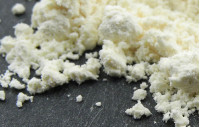

-min-200x127.JPG)
